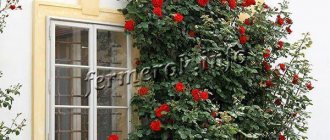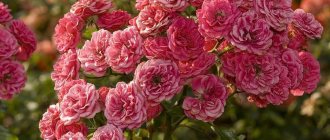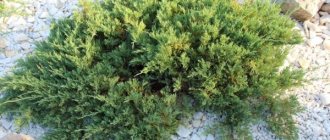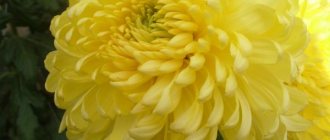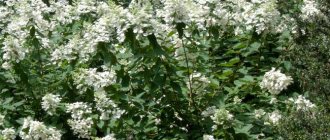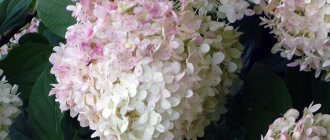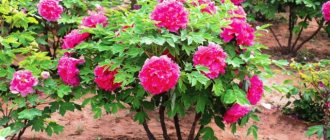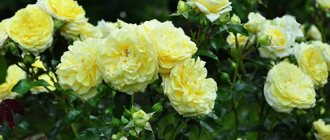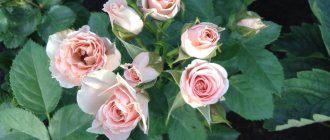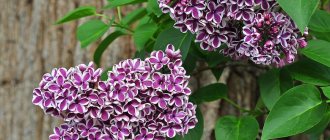Climbing roses, which bloom all summer, help to transform the garden so that it is literally buried in flowers, winter-hardy varieties of which are suitable for cultivation in most of Russia, with the exception of perhaps the far north. They easily climb an arch or a high fence and disguise an inconspicuous wall. Moreover, they bloom from June to September. It is difficult to imagine another long-flowering plant that would become the queen of the flowerbed.
When the question arises about purchasing climbing roses that bloom all summer for the garden of a private home, take into account that varieties, winter-hardy or not, are divided into two groups.
- The first is distinguished by flowering, which can only be described in one word: abundant. Moreover, the sizes of the roses are small.
- The second group is characterized by stronger shoots. Therefore, they can more easily endure winter with a wide range of frost levels. They are described not only as blooming all summer, but also not flowering until late autumn.
Planting a new bush of the second group of climbing roses should be postponed until spring. More precisely for May. Just look at the buds of the seedling. If they have not yet opened and are dormant, then plant them before the buds open in the garden. When the buds of a rose seedling are already open, that is, they were purchased from a greenhouse, you must wait until the day the garden trees begin to bloom. In such a situation, you can be sure that the climbing rose will take root and have time to take root by winter.
Features of choosing climbing roses for the Moscow region
Beautiful and fragrant roses for growing in the Moscow region must meet certain requirements. It is advisable to choose varieties:
- with increased frost resistance - bushes must withstand temperatures dropping to -25 ° C or more;
- with resistance to drought - in the summer in the Moscow region there are often long periods of hot and sunny weather;
- with early flowering - autumn in the region begins at the standard time in mid-September or October, so late varieties remain decorative for too short a time.
Also, when choosing, it is necessary to give preference to varieties with high immunity to viruses and fungal diseases. It is good if climbing roses are able to bloom profusely on poor soils with a low content of nutritious organic matter.
Reproduction methods
For the climbing variety, the generative method is not suitable. Roses are propagated only vegetatively:
- By cuttings: cut sections from last year's shoots and plant them in fertile soil. The material for transfer to a permanent location will be ready in two years.
- By budding: a strong, healthy bud with part of the bark or the tip of a young shoot is suitable for this purpose.
- Layerings obtained from last year's stem bent and covered with soil.
Advice! The last method of propagation is the most productive for climbing roses. Vegetative buds take root well. The seedlings are ready to be transferred to a permanent place for the next season.
The best winter-hardy varieties of climbing roses for the Moscow region
On average, the temperature in the Moscow region in winter drops to -25 °C, but colder winters sometimes occur. The higher the frost resistance of climbing roses, the fewer problems they will cause when growing.
Polka
A beautiful climbing rose grows up to 3 m wide. It bears large double buds up to 12 cm in diameter, the petals of the flowers are soft apricot or deep pink. Under the sun's rays they fade and acquire a creamy color.
The climbing variety Polka was developed in France in the 1990s. Gardeners value the crop not only for its attractive flowering, but also for its pleasant aroma. The bushes emit a particularly strong smell in the evening; it is beneficial to plant them near the veranda or the facade of the house.
Frost-resistant climbing rose for the Moscow region Polka has good resistance to fungal diseases and pests. Calmly tolerates high humidity and does not crumble during the rainy season. During the flowering period, the shoots bend low to the ground under the weight of the buds, so it is recommended to lay the branches on a support.
Polka tolerates winters well in the Moscow region, but in the fall it is advisable to cover it
Super Dorothy
The winter-hardy, repeat-blooming rose of German selection is characterized by good resistance to pests and infections. Requires minimal maintenance in the garden. It is enough to water the bushes in severe drought and feed them with minerals and organic matter from time to time.
The shoots of the climbing rose reach 3-4 m in length, there are no thorns on the branches. The buds are small, collected in clusters of 20-40 pieces, with pink-crimson petals. It is recommended to use the variety in landscape design in the Moscow region in the design of supports and arches, since the shoots of the shrub are very soft and flexible.
Attention! Super Dorothy blooms only in July, but the decorative period continues until frost
.
The Super Dorothy variety fades in the sun, so it is better to grow it in a shaded place
Application in landscape design
When planting a plant in a flowerbed, consider not only the combination of colors, but also compatibility with other flowers. You cannot plant roses and dahlias and gladioli in the same flower bed - they will oppress each other. Green buds harmonize well with violas, low-growing carnations, and lilies. If several varieties of roses are grown in a flowerbed, sage, lavender, and oregano will help fill the space between them.
On a note! Rose can be combined with conifers, lilacs, and sea buckthorn.
The planting location is determined depending on the varietal characteristics of the plant - tall flowers are planted solitary, low-growing ones are used in decorating rockeries and alpine slides. Climbing species are planted along fences and gazebos, along walls. On supports, roses look good as single plants. Ground cover varieties complement well a flower bed located on a slope.
To ensure flowering throughout the season, several roses are planted with different growing seasons. By alternating colors and types, you can get a bright flower bed or decorate a border. Plants are in demand among photographers, decorators, and when decorating festive events.
The most unpretentious varieties of climbing roses for the Moscow region
The climate of the Moscow region as a whole is not considered extremely harsh. However, the region experiences sudden temperature changes, prolonged rains and sudden frosts. Therefore, varieties of climbing roses with increased hardiness feel most comfortable.
Santana
The popular climbing rose of German origin is particularly unpretentious and highly frost-resistant. Recommended for cultivation in the Moscow region, used in the design of fences, gazebos and arches.
The height of the bush is 23 m. The shoots are elastic and strong, they can rise up even without support. The leaves are dark green, glossy, and look very decorative. In June, Santana bears semi-double large flowers, collected in clusters of up to seven pieces. The buds can reach 10 cm in diameter, their petals are bright red and velvety.
The climbing rose Santana continues to bloom until September with short breaks during the summer.
Don Juan
A lushly flowering climbing rose for the Moscow region has good frost resistance down to -25 °C. Does not require complex care, tolerates drought and prolonged rains.
The shoots reach 4 m in length and are covered with large sharp thorns. During the decorative period, 1-2 large buds about 10 cm in diameter are formed on each stem. The flowers are cherry-red in color and emit a strong, pleasant aroma.
Climbing rose Don Juan rarely suffers from black spot and other ailments
Pink Mushimara
Rose Pink Mushimara - used in landscape design to improve dacha areas. This is a shrub variety of roses, characterized by a cascade type of bud growth. Rose inflorescences are bright pink flowers that have a velvety texture. The plant has flexible shoots and can be twisted around supports of various shapes. The height of the bushes reaches 2 meters. The flowering period of buds begins in mid-summer and lasts until the first cold weather.
Pink Mushimara loves sunny areas, so it is not recommended to plant it in a shady area. The culture is a type of frost-resistant plant, but can withstand frosts down to -23 degrees. It is permissible to plant it in open ground. The plant takes root well in central Russia. The most suitable regions for cultivation are the Moscow region, the South (Kuban).
The best shade-tolerant varieties of climbing roses for the Moscow region
Many climbing roses need plenty of sun. But in the Moscow region, cloudy and rainy weather can persist for a long time in the summer. Shade-tolerant varieties feel best in such conditions.
Florentina
The variety of German selection is considered to be quite young - it entered the Russian market in 2011. The bushes reach a height of about 2 m, have shiny bright green leaves and flexible shoots. At the beginning of summer, large buds of a light red or scarlet hue with a yellow core appear on the branches. Up to 100 flowers can form on one bush during the season. To prevent the buds from burning out, it is recommended to plant climbing roses in the Moscow region in the shade - the variety does not need a lot of sunlight.
Florentina demonstrates high resistance to black spot and other fungi and tolerates winter cold well. In landscape design, the variety is used for single and group planting in borders and for cascade cultivation.
The disadvantages of the climbing rose Florentina include a weak, barely noticeable aroma
New Dawn
The climbing rose was developed in the United States in the 1930s. The bushes are large in size, the shoots reach 3-4 m in length. The branches are densely covered with bright green leaves, which are largely responsible for the decorative appearance of the plant.
At the end of May, large and dense buds up to 8 cm in diameter appear on the shoots of climbing roses in the Moscow region. The petals are pinkish, gradually becoming cream and white after the flowers open. The decorative period lasts until September.
The climbing rose New Down has good frost resistance. In mild winter conditions, the shrub does not even need to be covered; it is enough to mulch it with dry leaves or spruce branches.
The main problems when growing New Down climbing roses are caused by numerous sharp thorns.
Salita
This variety has one of the brightest orange-scarlet colors. Its flowers, although small in size, are very spectacular and have the shape of a classic tea rose, with up to 40 petals. Rose Salita exudes a strong fruity aroma.
The foliage is dark and dense, has a shiny surface of the leaves and emphasizes the blooming flowers of the plant, which makes them much more beautiful. The height of the bushes reaches 3 meters. This variety of red climbing roses blooms almost all summer continuously.
The best varieties of climbing roses for the Moscow region for an arch
The photo of the best climbing roses for the Moscow region shows that flexible and long flowering shoots are often used to decorate arches. The most popular are hardy varieties with a long decorative period.
Rosarium Uetersen
The German climbing rose was developed in the 1980s and is distinguished by its good decorative qualities and hardiness. Reaches about 2 m in height and diameter, has arched, strong but elastic shoots. The bright green leaves are medium in size, glossy, the buds are densely double and large, deep pink, up to 10 cm wide. Collected in brushes of 5-7 pieces at the tops of the shoots. Once fully opened, they fade slightly in the sun, but the core remains bright.
The variety blooms for the first time in the Moscow region in June. In mid-summer it takes a short break, and then blooms in waves until autumn. Tolerates winter frosts down to -23 °C, but needs reliable shelter.
Rosarium Jutersen tolerates pruning well and demonstrates resistance to wind and rain
Elf
Another climbing variety of German selection has shoots up to 3.5 m long. During the flowering period, the branches hang beautifully from the arch. The buds are located on the shoots singly or in small groups of 2-3 pieces. The flowers are large, up to 14 cm in diameter, greenish or yellow-cream in color. The rose's large, shiny leaves of a dark green hue are also responsible for the rose's decorative appearance.
The flowering of the variety in the Moscow region continues all summer until autumn. The plant tolerates frosts in the middle zone quite calmly, but it still needs to be covered.
Rose Elf is rarely affected by fungal diseases and does not suffer from pests
Rosarium Uetersen
A relatively old variety, loved by rose growers all over the world. The bush is large, the stems grow up to 2–3 m. The thorns are thin. Repeat flowering, inflorescences of 3–5 buds. The flower is cup-shaped, as if flattened, of a deep crimson color; in the sun it turns into pinkish-silver, and does not suffer from rain. Diameter is 8–9 cm, the petals are wavy, the bud is very densely packed. The aroma is light, fruity. The growth rate of the bush does not differ.
The rose Rosarium Jutersen has petals arranged in a very unusual way, reminiscent of tiling, and the core of the flower is divided into four parts
The best yellow varieties of climbing roses for the Moscow region
In addition to red and pink climbing varieties, roses with a yellow tint are popular. They look bright in a summer cottage and combine well with other perennials.
Casino
A beautiful, repeat-blooming climbing rose that grows quickly. The shoots reach 3 m in length, 4-5 buds are formed on each stem. The flowers are densely double, bright sunny yellow, more saturated in the core and delicate at the edges.
The shrub is resistant to infections and fungi and develops well in the Moscow region, throughout the middle zone and in the north-west. Often used to decorate vertical structures. For the winter, the shoots are removed from their support, laid on the ground and carefully covered.
Yellow Rose Casino has a pleasant tea aroma
Golden Gate
A climbing rose up to 2 m in height bears white-yellow buds collected in inflorescences of 6-10 pieces. Blooms from June to September. At the peak of decorativeness, bright light buds abundantly cover the entire bush. The flowers reach 8 cm in diameter.
The climbing rose Golden Gate tolerates frost well and is suitable for cultivation in the Moscow region and the middle zone. Provided that it is carefully covered for the winter, the variety can be grown even in Siberia.
Attention! The buds of the Golden Gate climbing rose do not fall off on their own, so they need to be removed as they dry out.
Golden Gate has a pleasant strong citrus aroma
History of appearance and description
The history of this unusual variety began at the end of the 18th century - back in 1782. This species was brought out by a botanist from Holland. The scientist grafted a white rose bush onto an old thorn bush. After some time, a selection experiment led to the appearance of a rose with a glass-shaped bud of a light green color.
This unusual color caused a lot of controversy among botanists. But despite this, the popularity of the green rose is only growing. Now the plant can be seen not only in botanical gardens, but also in private plots and parks.
The best varieties of climbing roses without thorns for the Moscow region
Caring for most climbing roses is made difficult by the abundant sharp thorns on the shoots. But some varieties of the crop have smooth branches.
Wartburg
The ancient climbing rose has long and smooth shoots up to 6 m long. The variety is not afraid of high humidity and little sun, and tolerates cold and drought well.
At the beginning of summer it blooms with small, densely double buds up to 2 cm in diameter. The petals are light pink, crimson or amethyst, with a light delicate aroma. The buds are collected in large clusters of up to 40 pieces; at the peak of decorativeness, the green foliage of the shrub is almost invisible under the flowers.
The climbing rose Wartburg was bred back in 1910
Pierre de Ronsard
French thornless climbing rose is well suited for growing in the Moscow region. It rises to 1-3.5 m and is characterized by slow development. The shoots of the shrub are hard and thick, smooth, the leaves are dark green and glossy.
At the beginning of summer, the variety produces large buds 7.5-12 cm in diameter. The coloring is very interesting. The petals are carmine pink at the core and creamy white or beige at the edges. They emit a moderate aroma.
In the Moscow region, the buds of the Pierre de Ronsard rose often do not open completely and retain an attractive density
Elf
The bush is of medium height (2.5–3 m), spreading, the shoots droop under the weight of the buds. Flowering is almost continuous. The buds are single or form inflorescences of three. Flowers are 8–14 cm in diameter, densely double, of an unusual creamy-greenish hue. The aroma is light, with notes of fruit. Flowers do not suffer from the sun, but do not tolerate rain. The bush will not survive in the shade.
In the opening buds of the Elf rose, the outer petals gradually bend outward
Rose Captain Samuel Holland Canadian park
Captain Samuel Holland is a variety of Canadian roses that is easy to care for. It was specially designed to withstand harsh Canadian winters, so the crop can be grown almost everywhere in Russia. The rose can withstand frosts up to 37 degrees. The plant is also resistant to pests and infectious diseases. The buds of the culture have a fuchsia tint. In the heat they fade and become pale pink. The leaves of the plant are dark; the bush itself has climbing, spreading shoots. Captain Samuel Holland prefers well-lit areas. In a shady area it grows poorly and produces few inflorescences.
Care includes standard procedures: watering, loosening the soil, periodic pruning, autumn feeding. Despite the hardiness of the bushes, it is recommended to cover or tie them up for the winter. The plant has a medium sweet aroma.
